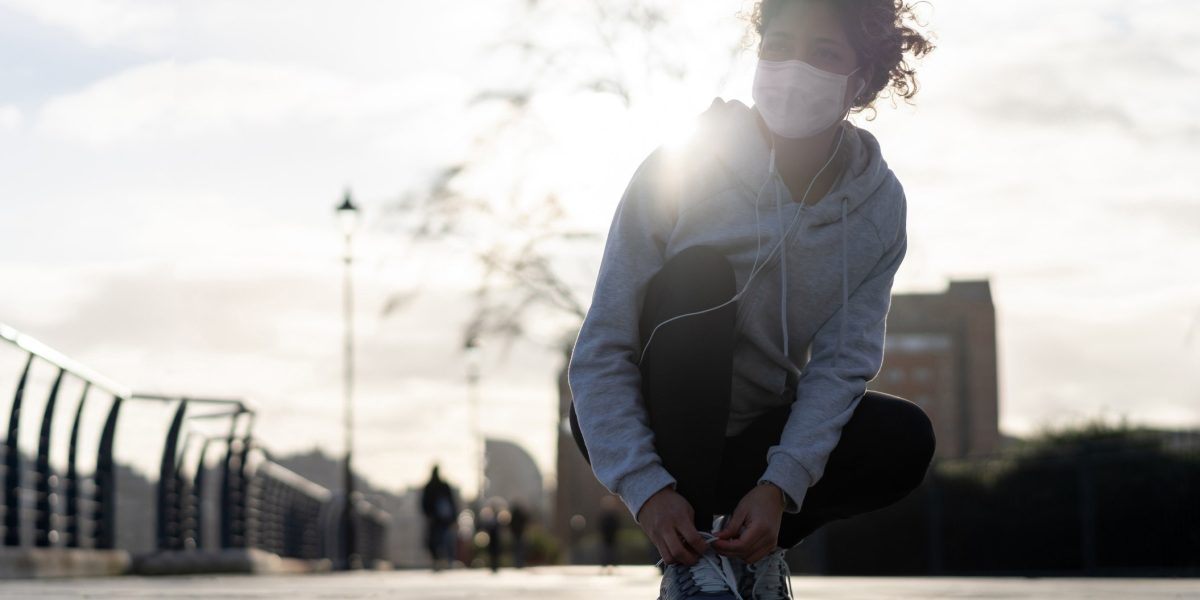It’s that time of year! Colds, the flu, and other gnarly illnesses are swooping in regularly to mess with your neatly planned day-to-day—which, if you’re like lots of exercisers, includes your regular workout. Though you might be tempted to grab some tissues and push through it, it’s actually more important than you may think to give working out when sick a little extra thought.
There’s no one answer to whether or not it’s okay to move your body when you’re feeling gross—it depends on a whole bunch of things, including your symptoms, the workout you had planned, and where you intend to do it. What’s more, the “rules” for exercising when sick have also shifted a bit thanks to everything we learned during the pandemic about how viral illnesses are spread and how much harm they can do. One thing that’s remained true? It’s always wise to listen to your body and respect when it needs rest, Carrie Horn, MD, chief medical officer at National Jewish Health in Denver, tells SELF. That also means there’s never a situation where you have to exercise, especially if you’re not feeling it (for whatever reason, physical or not).
Here are some things to keep in mind for weighing your workout options when you’re sniffly, snotty, or otherwise not feeling your best.
Consider your symptoms—and where you’re feeling them.
Start with a quick symptom check, Jaclyn McKenna, MD, a primary sports medicine physician at the Hospital for Special Surgery in White Plains, New York, tells SELF. Here’s what to keep in mind:
Cold and COVID-19 symptoms
If you’re dealing with “above the neck” symptoms—including congestion, a runny nose, a low-grade headache, or a mild sore throat—your first order of business is to test for COVID-19. Knowing you’re positive (or eliminating the possibility) “can help you make a good decision,” about your workout plans, Alex McDonald, MD, a family and sports medicine physician at Kaiser Permanente in California, tells SELF. (Friendly reminder: You can once again order four free test kits at COVIDtests.gov.) Remember, even if you test negative on the first rapid test, you should repeat it 48 hours later to confirm the result, according to the US Food and Drug Administration. So if you have any “cold” symptoms, you should probably consider your workout paused until you know for sure.
If you’re COVID positive and have only mild issues like congestion or a runny nose, the American College of Cardiology recommends waiting until things clear up entirely before exercising. Test negative twice? Then your symptoms are more likely to be an upper respiratory infection (like a cold), and it’s okay to move your body a bit. Even if you’ve got a light cough that feels more like it’s a tickle in your throat (not chesty), it’s probably okay for you to exercise, Dr. McKenna says. Moderate physical activity shouldn’t make this kind of mild illness feel worse or last any longer, research suggests. Doctors often call this the “above-the-neck” rule, and as long as you’ve ruled out COVID-19, you’re likely okay to continue on with these symptoms—as long as you modify wisely, of course. (More on that later.)
Body aches, fever, chest tightness, and other flu-like symptoms
Symptoms like body or muscle aches, fatigue, fever, a deeper cough, chest pain or tightness, or shortness of breath are all signs you should shelve your workout, Dr. McKenna says. These can signal a more serious systemic sickness, and exercise may worsen that.
